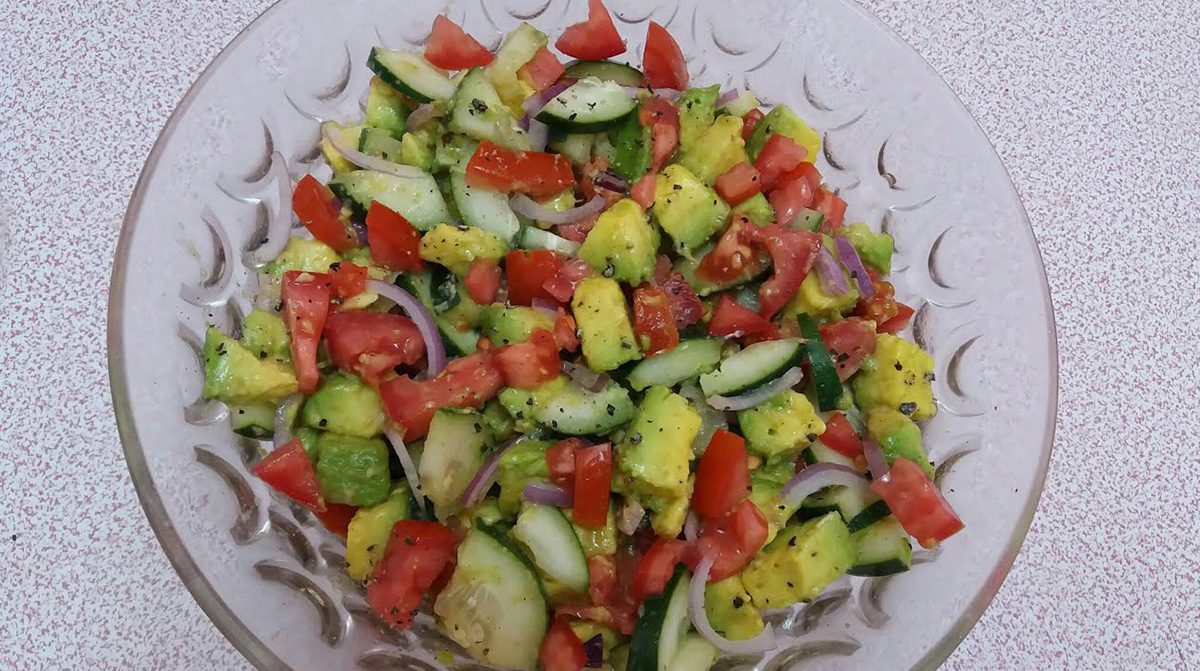Copyrights © 2025 My Afro Recipes. All rights reserved.
- Home
- Blog
- Map
- Destinations
Northern Africa
Central Africa
Eastern Africa
Western Africa
Southern Africa
Afro-Cuisine
- Meals
- Ingredients
- Shop
Kachumbari is more than a side dish. It reflects the vibrant culinary traditions of Africa. This fresh, zesty salad blends cultures and ingredients from across the continent. Made with tomatoes, onions, and chilies, it is a staple in many cuisines, especially along the Swahili coast. Here, Indian and African influences come together to create a dish loved for both flavor and history.
Kachumbari is popular in Kenya, Uganda, and Tanzania. Each region gives it a unique twist. In Kenya, it often pairs with grilled meats during barbecues and celebrations. In Uganda, it complements staples like matoke or posho, showing its versatility.
The base ingredients are simple—chopped tomatoes, onions, and green chilies. Some versions add avocado, cucumber, or cilantro. A squeeze of lemon or lime juice balances the sweetness of tomatoes with the sharp bite of onions. The result is a salad that looks vibrant and tastes refreshing.
Kachumbari is also social. Families share it at gatherings, and street vendors sell it alongside popular dishes. Its simplicity allows for endless creativity while staying true to African culinary roots.
The name “kachumbari” comes from the Indian word “cachumber,” which describes a similar chopped salad. Indian traders brought the dish to East Africa, along with spices and new cooking styles. Over time, locals adapted it with their own ingredients, creating today’s version of kachumbari.
The Swahili culture, a blend of African, Arab, and Indian influences, helped spread the dish along the coast. This history makes kachumbari more than just food—it is a symbol of cultural exchange and unity.
Kachumbari is not just about flavor; it brings people together. It often appears at family meals, street stalls, and festive gatherings. Its light, refreshing taste balances rich foods like nyama choma, pilau, or chapati.
The dish reminds us how migration and trade shaped African cuisine. With every bite, we taste a story of connection, tradition, and creativity.
Kachumbari is a celebration of Africa’s food heritage. Its fresh ingredients and bright colors make it a favorite across the continent. Its roots in Indian cuisine highlight the cultural exchanges that shaped East Africa. More than a salad, it represents history, community, and togetherness. Next time you enjoy kachumbari, savor not just the flavors, but also the story it carries.
A fresh, tangy salad that’s a staple side dish in Kenya & East Africa.

Kachumbari is more than just a salad—it’s a must-have accompaniment that brightens up hearty meals. Traditionally, it’s served alongside nyama choma (grilled goat or beef), pilau, or even ugali and sukuma wiki. The freshness cuts through the richness of grilled meats, while the lime and chili bring balance to starchy dishes. The mango and avocado twist (Kachumbari ya embe na parachichi) is a modern variation enjoyed in coastal and urban areas, adding a tropical flair that reflects East Africa’s diverse culinary influences.
Wash all the fresh produce. Dice the tomatoes and cucumber, slice the red onion thinly, and chop the chili finely. Add them into a mixing bowl.
Dice the mango into small, firm cubes and add it to the bowl. Then gently fold in the avocado cubes, being careful not to mash them. The combination of sweet mango and creamy avocado creates a delicious contrast.
Add the chopped cilantro, then squeeze the lime juice generously over the mixture. Sprinkle with salt and black pepper, then toss everything gently until evenly combined.
Allow the salad to sit for about 5 minutes to let the lime juice soften the onions and enhance the flavors. Serve chilled or at room temperature as a refreshing side to grilled meats, pilau, or chapati.
Wash all the fresh produce. Dice the tomatoes and cucumber, slice the red onion thinly, and chop the chili finely. Add them into a mixing bowl.
Dice the mango into small, firm cubes and add it to the bowl. Then gently fold in the avocado cubes, being careful not to mash them. The combination of sweet mango and creamy avocado creates a delicious contrast.
Add the chopped cilantro, then squeeze the lime juice generously over the mixture. Sprinkle with salt and black pepper, then toss everything gently until evenly combined.
Allow the salad to sit for about 5 minutes to let the lime juice soften the onions and enhance the flavors. Serve chilled or at room temperature as a refreshing side to grilled meats, pilau, or chapati.
Kachumbari is more than just a salad—it’s a must-have accompaniment that brightens up hearty meals. Traditionally, it’s served alongside nyama choma (grilled goat or beef), pilau, or even ugali and sukuma wiki. The freshness cuts through the richness of grilled meats, while the lime and chili bring balance to starchy dishes. The mango and avocado twist (Kachumbari ya embe na parachichi) is a modern variation enjoyed in coastal and urban areas, adding a tropical flair that reflects East Africa’s diverse culinary influences.
Kachumbari is a fresh East African salad made primarily from chopped tomatoes, onions, and chilies. Many variations include avocado, cucumber, or cilantro, with lemon or lime juice for a zesty finish.
The word “kachumbari” comes from the Indian word “cachumber,” a similar chopped vegetable salad. It spread to East Africa through Indian traders and became a staple in Kenyan, Ugandan, and Tanzanian cuisine.
Kachumbari is commonly served as a side dish to grilled meats like nyama choma, pilau rice, chapati, or Ugandan matoke. Its freshness balances the richness of hearty African meals.
Register for our monthly newsletter and be the first to get notified about new recipes, shop promos, discounts & more.
Copyrights © 2025 My Afro Recipes. All rights reserved.